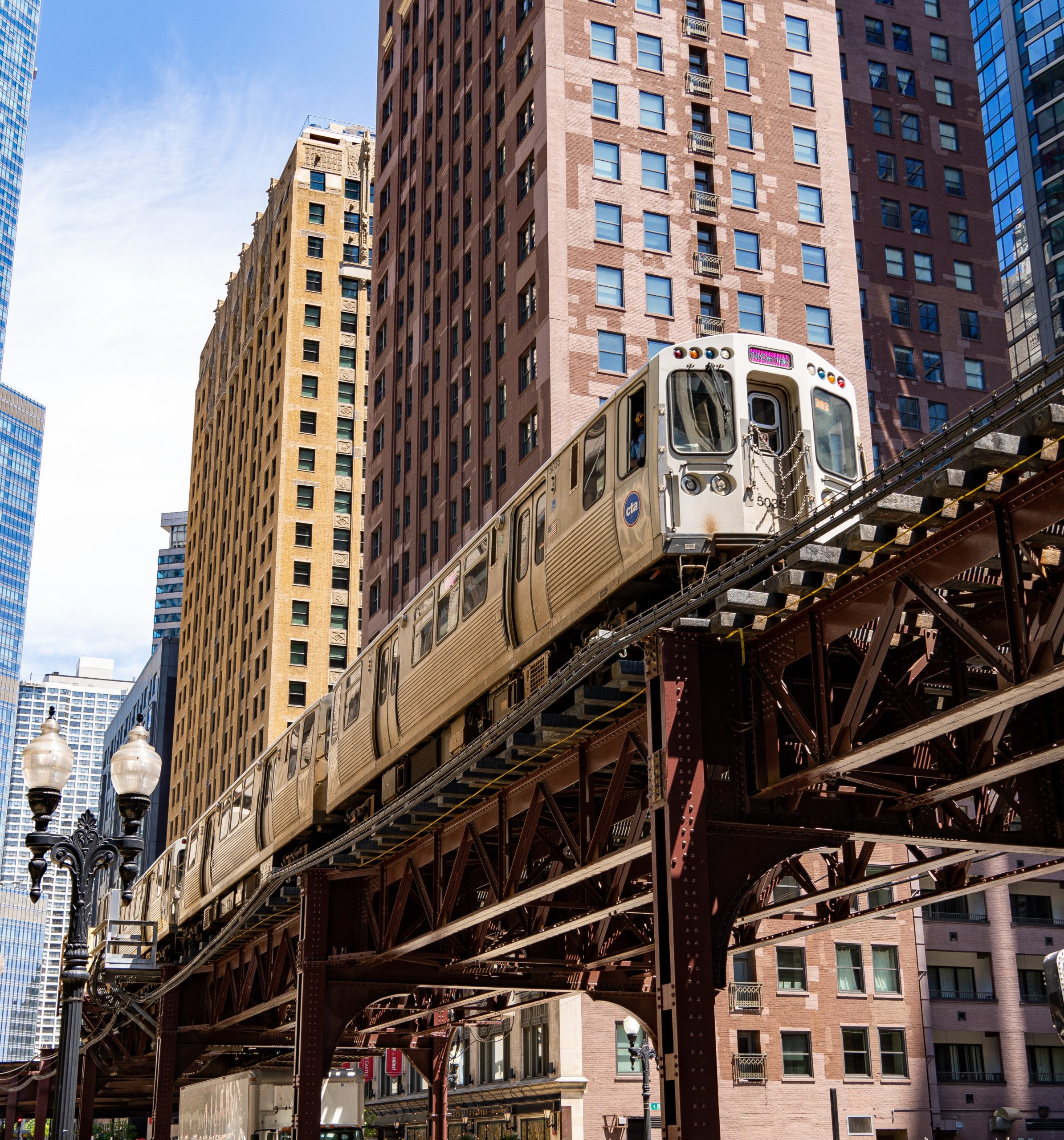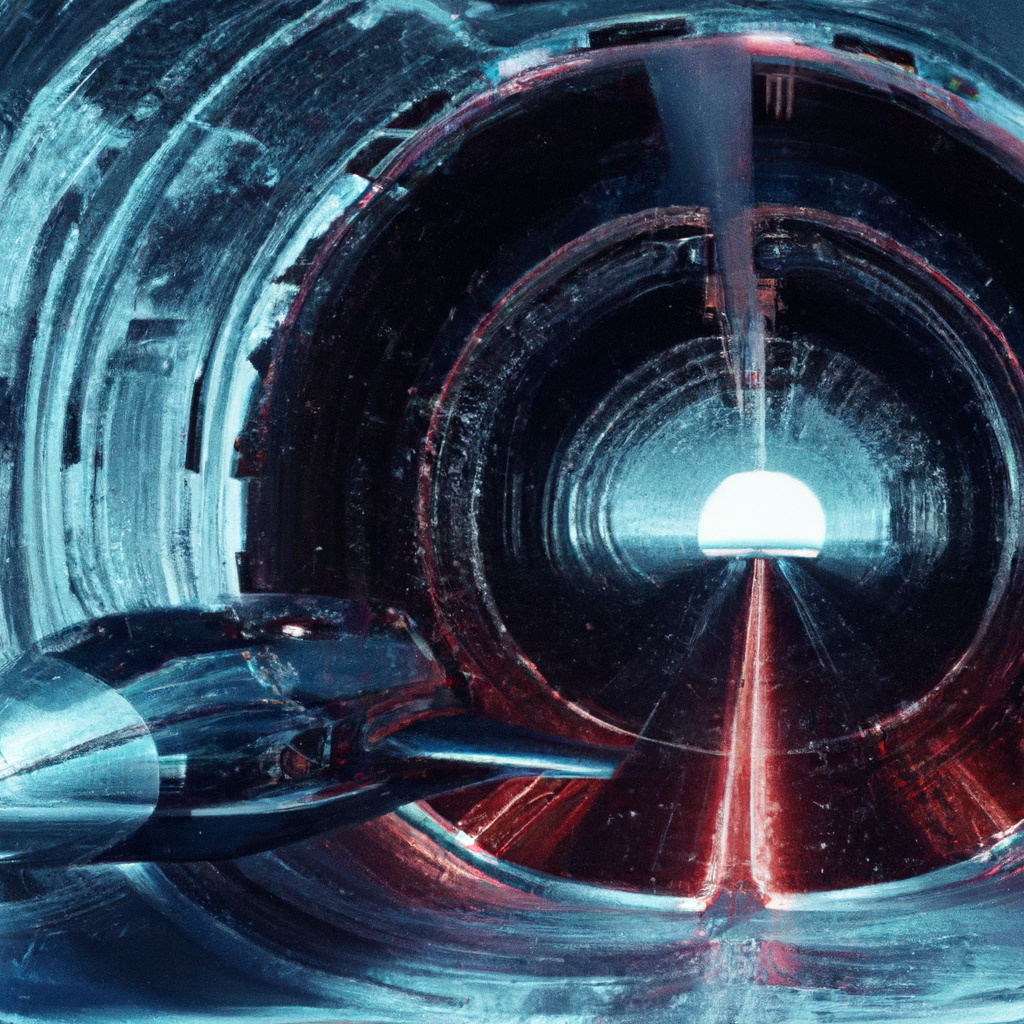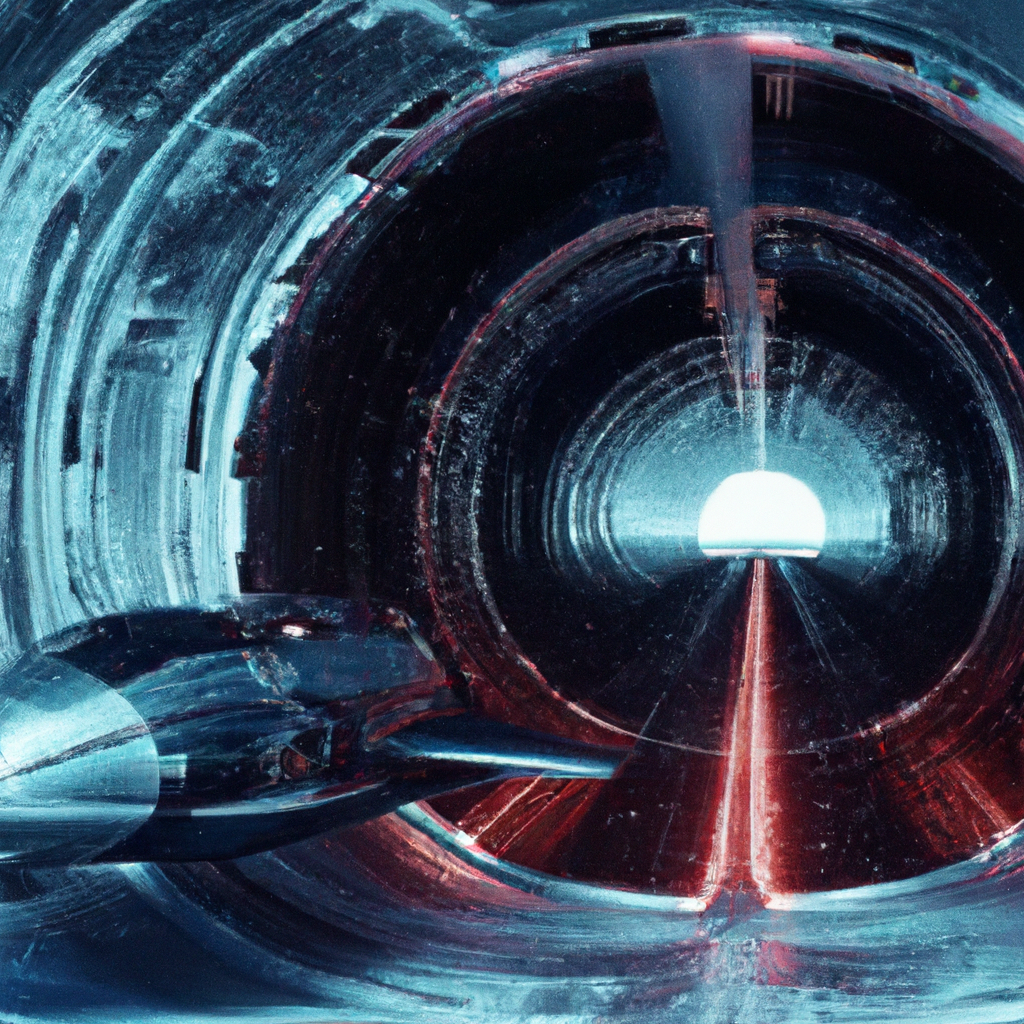Imagine a future where travel on land is not just fast, but supersonic. A groundbreaking transportation concept called the Hyperloop is poised to revolutionize the way we move from one place to another. In this article, we will explore the prospects and challenges of the Hyperloop technology, as well as the intense race among companies to be the first to make this futuristic vision a reality. Hold on to your seats as we embark on an exciting journey into the world of high-speed transportation!

Introduction
Welcome to this comprehensive article on the Hyperloop, a revolutionary mode of transportation that promises to transform the way we travel. In this article, we will explore the prospects of the Hyperloop, the challenges it faces, the technological advancements and innovations driving its development, the race among transportation companies to bring this concept to reality, government and industry initiatives supporting its growth, its impact on existing modes of transportation, and finally, its environmental and social implications.
What is the Hyperloop?
The Hyperloop is a proposed mode of transportation that consists of pods traveling at high speeds through low-pressure tubes. These pods, which are capable of carrying passengers or cargo, would levitate using magnetic levitation technology and travel at speeds nearing or even exceeding the speed of sound. The concept was first conceived by Elon Musk, the CEO of SpaceX and Tesla, who proposed it as a solution to address the inefficiencies and challenges of traditional modes of transportation.
Prospects of the Hyperloop
Revolutionizing transportation
The Hyperloop has the potential to revolutionize transportation by offering a faster, more efficient, and sustainable alternative to traditional modes of travel. With its high speeds and reduced air resistance in vacuum tubes, the Hyperloop could turn long-distance journeys into mere minutes, connecting cities and regions like never before.
Reducing travel time
One of the main advantages of the Hyperloop is its ability to significantly reduce travel time. With speeds estimated to reach up to 700 miles per hour, a journey that currently takes hours by car or train could be completed in a matter of minutes. This could have a profound impact on daily commutes, business trips, and tourism, allowing people to travel greater distances in shorter periods of time.
Efficiency and sustainability
The Hyperloop’s potential for efficiency is a key factor in its appeal. By operating in low-pressure vacuum tubes, the pods would experience minimal air resistance, resulting in reduced energy consumption. Additionally, the use of renewable energy sources, such as solar panels on the tube infrastructure, could further enhance the sustainability of the system, minimizing its carbon footprint.
Economic benefits
The Hyperloop also presents promising economic benefits. Its construction and operation would create numerous job opportunities, both in terms of infrastructure development and pod manufacturing. Furthermore, the increased connectivity and accessibility facilitated by the Hyperloop could spur economic growth, attracting businesses, investors, and tourists to previously underserved areas.
Reduction in traffic congestion
With its potential to transport large numbers of people in a short amount of time, the Hyperloop could play a significant role in alleviating traffic congestion. By providing an alternative mode of transportation, it could help reduce the number of cars on the road and relieve the strain on existing transportation infrastructure, ultimately improving the overall flow of traffic.
Challenges Faced by the Hyperloop
While the Hyperloop holds great promise, it is not without its challenges. Several key considerations need to be addressed before the system can become a reality.
Safety concerns
Safety is a paramount concern when it comes to any form of transportation, and the Hyperloop is no exception. The high speeds at which the pods would travel and the technical complexities involved in maintaining a vacuum environment present unique safety challenges that must be carefully addressed to ensure the well-being of passengers.
Technical feasibility
The feasibility of implementing the Hyperloop on a large scale is another challenge that needs to be overcome. The technology required for magnetic levitation, maintaining vacuum tubes, and achieving high speeds is still in the experimental stage and needs further development and refinement. Additionally, ensuring the reliability and scalability of the system poses an ongoing technical challenge.
Infrastructure requirements
Building the necessary infrastructure for the Hyperloop, including laying down and maintaining the low-pressure vacuum tubes, poses a significant challenge. The cost and logistics involved in constructing a vast network of tubes spanning across different geographies require careful planning, coordination, and investment in advanced construction techniques.
Cost considerations
The Hyperloop’s cost is another significant challenge. The construction, maintenance, and operation expenses associated with implementing the system are considerable, and finding a financially sustainable model that allows for affordable ticket prices while covering these costs is crucial for its viability.
Regulatory and legal hurdles
The Hyperloop’s future also hinges on navigating various regulatory and legal frameworks. As a completely new mode of transportation, it does not fit neatly into existing regulations, and establishing a clear legal framework, obtaining necessary permits, and addressing liability concerns are imperative steps that need to be taken.

Technological Advancements and Innovations
To overcome the challenges and make the Hyperloop a reality, significant technological advancements and innovations are being pursued. Here are some key areas of focus:
Magnetic levitation technology
Magnetic levitation, or maglev, technology allows the pods to levitate and glide above the tracks, minimizing friction and enabling smooth, high-speed travel. Advancements in maglev technology, such as improved levitation and stabilization systems, are essential for the safe and efficient operation of the Hyperloop.
Vacuum tubes and air pressure
Maintaining a low-pressure environment inside the tubes is critical for minimizing air resistance and reducing energy consumption. Innovations in tube design, airlock systems, and air pressure regulation are being explored to enhance the performance and energy efficiency of the Hyperloop system.
Propulsion systems
Powering the pods and propelling them at high speeds requires innovative propulsion systems. Electric motors, linear induction motors, or even alternative propulsion technologies like compressed air or magnetic propulsion are being researched to optimize speed, energy efficiency, and reliability.
Pod design and passenger safety
Designing the pods for optimal passenger comfort and safety is a crucial aspect of Hyperloop development. Lightweight materials, advanced aerodynamics, and robust safety systems are being employed to ensure a smooth and secure travel experience, mitigating any potential risks associated with high speeds and vacuum environments.
The Race Among Transportation Companies
The development of the Hyperloop has sparked a race among transportation companies to be at the forefront of this groundbreaking technology. Here are some of the prominent players competing in this race:
Virgin Hyperloop One
Virgin Hyperloop One, backed by Richard Branson’s Virgin Group, is one of the leading companies in the Hyperloop race. It has developed a full-scale working prototype and is actively pursuing partnerships and projects around the world, including the United States, Saudi Arabia, and India.
SpaceX’s Hyperloop Pod Competition
Elon Musk’s SpaceX also plays a critical role in driving Hyperloop innovation. Since 2015, SpaceX has been organizing the Hyperloop Pod Competition, inviting teams from around the world to design and build prototype pods to race in a test track. This competition encourages collaboration and pushes for technological advancements in Hyperloop development.
TransPod
TransPod, a Canadian-based company, aims to deliver a safe and efficient Hyperloop system. It has achieved notable milestones, including successful track tests and partnerships with aerospace and transportation industry leaders to advance its technology.
Hardt Hyperloop
Hardt Hyperloop, based in the Netherlands, is another significant player in the race. The company focuses on developing key components and infrastructure for the Hyperloop, including tunnels, stations, and pods. It aims to create a European network of Hyperloop transportation systems.
Delft Hyperloop
Delft Hyperloop, hailing from the Delft University of Technology in the Netherlands, is a prominent competitor in the SpaceX Hyperloop Pod Competition. The team has consistently showcased innovative designs and has won several awards for their prototype pods, contributing to the overall progress of Hyperloop technology.

Government and Industry Initiatives
Governments and industries worldwide are taking notice of the transformative potential of the Hyperloop and are actively supporting its development. Here are some notable initiatives:
Investments and partnerships
Government and private investors are increasingly recognizing the Hyperloop’s possibilities and have been providing financial support to companies working on its realization. This funding helps accelerate research and development, as well as the construction of test tracks and prototypes.
Research and development grants
Governments and research institutions are providing grants for Hyperloop-related research and development. These grants support scientific breakthroughs, material innovations, and energy efficiency studies, fostering advancements in key areas of Hyperloop technology.
Regulatory frameworks
To facilitate the deployment of the Hyperloop, governments are working on creating regulatory frameworks that address safety, operations, and licensing requirements. By establishing clear guidelines and standards, regulators can ensure the safe and efficient operation of the Hyperloop while providing a conducive environment for private companies to invest and innovate.
Hyperloop’s Impact on Existing Modes of Transportation
The Hyperloop’s introduction would undoubtedly impact existing modes of transportation. Here’s how it could influence different sectors:
Competition with air travel
The Hyperloop’s speed and convenience could present stiff competition for short to medium-haul air travel. Flights between nearby cities could become obsolete as the Hyperloop offers faster and more efficient alternatives, potentially disrupting the airline industry and changing the dynamics of regional and international travel.
Railway and high-speed trains
High-speed rail systems, such as the renowned Shinkansen in Japan, could face competition from the Hyperloop. With its potential for even higher speeds and reduced travel times, the Hyperloop could redefine what is considered “high-speed” and challenge the dominance of traditional rail systems in long-distance transportation.
Automobiles and road transport
The Hyperloop’s impact on automobiles and road transport could be significant. Commuters may increasingly opt for Hyperloop travel, reducing the number of private vehicles on the road. This could lead to a decrease in traffic congestion, lower greenhouse gas emissions, and a shift in urban planning towards more efficient and sustainable transportation systems.

Case Studies and Demonstrations
Several notable case studies and demonstrations have been conducted to showcase the feasibility and potential of the Hyperloop. Here are a few examples:
Dubai-Abu Dhabi Hyperloop
The United Arab Emirates (UAE) has been at the forefront of Hyperloop development. In 2016, a partnership was formed between Dubai’s Roads and Transport Authority and Virgin Hyperloop One to explore the feasibility of a Hyperloop connection between Dubai and Abu Dhabi. This collaboration aims to revolutionize travel within the UAE, significantly reducing the travel time between the two cities, which are around 150 kilometers apart.
HyperloopTT’s Commercial Agreement in Ukraine
Hyperloop Transportation Technologies (HyperloopTT) signed a historic commercial agreement with the Ukrainian Ministry of Infrastructure in 2018. The agreement focuses on establishing a legal framework and exploring the feasibility of an intercity Hyperloop system in Ukraine, potentially connecting cities like Kiev, Lviv, and Odessa.
Virgin Hyperloop Certification Center in West Virginia
In 2020, Virgin Hyperloop announced plans to establish a Hyperloop Certification Center in West Virginia, United States. This center will serve as a hub for testing, research, and certification activities, further advancing the technology and setting the stage for its commercial deployment in North America.
Environmental and Social Implications
The implementation of the Hyperloop could have significant environmental and social implications. Here are a few key areas to consider:
Reducing greenhouse gas emissions
As the world seeks sustainable transportation solutions, the Hyperloop’s potential to reduce greenhouse gas emissions is noteworthy. By relying on renewable energy sources and offering an energy-efficient mode of transportation, the Hyperloop could contribute to the global efforts to combat climate change and reduce dependence on fossil fuels.
Impacts on urban development
The Hyperloop’s influence on urban development cannot be ignored. The introduction of new transportation options can reshape the urban landscape, decentralizing economic activities and promoting the development of previously inaccessible areas. The Hyperloop could lead to the creation of new city centers and the revitalization of smaller towns and cities, fostering economic growth and enhancing regional connectivity.
Socio-economic disparities and accessibility
While the Hyperloop promises enhanced connectivity, it is crucial to consider social and economic disparities as well as accessibility. Ensuring that this technology is available to all citizens, regardless of their socio-economic background or location, will be essential. Efforts must be made to make the Hyperloop affordable, inclusive, and accessible to all, creating opportunities for social and economic development across different communities.
In conclusion, the Hyperloop holds immense prospects for revolutionizing transportation, reducing travel time, enhancing efficiency and sustainability, and providing economic benefits. However, it also faces challenges related to safety, feasibility, infrastructure, costs, and regulations. Technological advancements, industry competition, and government initiatives are driving the development of the Hyperloop, with the potential to disrupt existing modes of transportation. The Hyperloop’s environmental and social implications need to be carefully considered to ensure a sustainable and equitable future. With ongoing research, testing, and collaborative efforts, the Hyperloop is inching closer to becoming a reality, presenting an exciting glimpse into the future of transportation.













